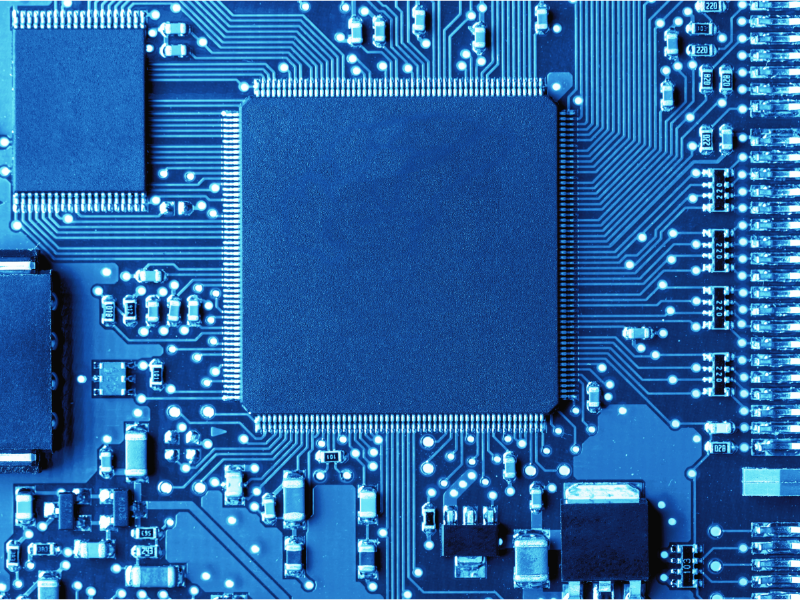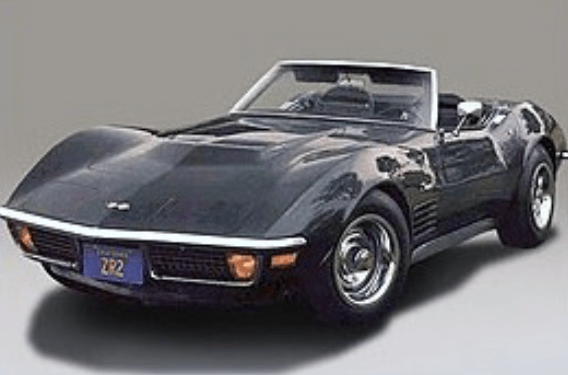A Plea for Low Tech
Low Tech vs. High Tech
It is 1992. You are in the Gulfstream making a run from Ft. Lauderdale to Bimini at your customary 50 knot cruising speed in your brand new Berteras (when boats became too expensive and complicated to build due to “high tech,” small boat companies fell by the wayside and larger ones found it necessary to pool their resources).
The computer controlled digital instrument panels in front of you blink blue liquid crystallized facts and figures at you. The central computer on board controls fuel management, steering and throttle setting while monitoring engine functions, pumping bilges and making you coffee in the morning. Your fiberglass and ceramic diesel engines are smoothly purring beneath the deck when, suddenly, the information panel at the helm station goes blank and the engines die as your Berteras slides off plane and starts wallowing in the nasty eight foot (and building) seas of the Gulfstream.
Being in boating all your life, you pride yourself on being self-sufficient at sea so you grab your tool box and open the engine room door to see what’s happened. You pop a trouble shooting program into the engine room computer and crank the engines. The computer impassively informs you that the fuel management circuit is malfunctioning. Meanwhile the seas are growing vicious and the boat is lurching violently without the assist of her computer controlled stabilizers. On the inboard side of the engine lies a huge black box. You unlatch the cover, lift it off its gasket and look inside.
What you see is a jungle of printed circuits, diodes and computer chips. You stand there dejected with your crescent wrench in one hand and a screwdriver in the other as you realize that there is no way in hell you are ever going to fix these engines without a masters degree in electronics. You get on the telephone and call the Drug Enforcement Agency Coastal Patrol for a tow (the DEA took over the Coast Guard in 1990 when they realized the Coast Guard was expending 95% of their manpower preventing drugs from entering the States).
This little scenario is not nearly as silly as it might sound. A while back, I wrote an article about how the marine industry trails the automotive industry in styling by about five years. As I promised, the “blob” look from the automotive industry is creeping into the marine field and more floating blobs are appearing every year (there will be more on this topic in the future). What I didn’t say in that piece is that, not only does the marine industry trail the automotive industry in styling by five years, but also in mechanicals/electronics. This is a truly scary, pervasive trend.
I have always advocated “high tech” marine construction: lightweight, aluminum and composite construction using exotic foams, carbon fiber, Kevlar, unidirectional, biaxial, triaxial reinforcements and exotic, high strength resins. Yacht construction deals with structure — you can look at something and either it’s broke or it ain’t — no two ways about it.
Similarly, marine engines and systems have traditionally been mechanical in nature. You could look at something and see how it worked or if it was malfunctioning. A broken chain link on a mechanical steering system, a leaking hydraulic line, a sheared bolt, a bent valve, no spark from the coil or distributor, a ruptured fuel pump diaphragm, etc., are all things you can study and understand how they function (or malfunction) and troubleshoot. Till now, a guy with basic mechanical knowledge could go down in the bilge with a set of tools and fix a problem himself.
But look what is happening! Marine engine manufacturers are introducing fuel injection to their gasoline engines and breakerless ignitions and computerized engine controls. The latest fuel injection systems are of the “port injection” type where a computer sends a command to a little solenoid valve at each cylinder telling it when to open and close. This type of system can’t be far behind on diesel engines either. Scary! Some larger yachts are already controlled by “fly by wire” systems where steering and engine controls are cycled purely through electric impulses via wires. More scary! In a hydraulic system, you can look at lines and cylinders to detect a malfunction but you can’t “see” and electric leak. You can’t look at a printed circuit board and see if there is a problem. You can’t “see” what’s going on inside those funny little diodes and chips.
I have the pleasure of owning two Corvettes. One is a 1971 coupe powered by a monster 454 engine. The other is Corvette’s latest, greatest, high tech effort. The old car is nice and I feel at home with it. Since I bought it new, I have personally done virtually all the mechanical work needed. It’s got a big four barrel Rochester carburetor. Your foot is directly connected to the rotors at each corner of the car via hydro-mechanical brakes. It’s got analog instrumentation. The HVAC system is controlled by push/pull cables and vacuum servos. It’s a great, powerful and dependable car and, with my little tool box that I carry around with me, I feel confident that I can repair nearly any malfunction that might occur on the road and get myself home. The new ‘Vette is great too, but it scares me. It’s got ABS brakes (a computer brain is inserted between your foot and the brake pads).
It's got an incomprehensible electronic ignition system containing electronic “boards” with acronym names like “PROM.” It’s got an automatic electronic “climate control system”. If the old ‘Vette dies, I can go out with my wrenches and screwdrivers and a big hammer and usually fix the damn thing quickly. When my new Corvette dies, well… when I got the car I permanently engraved on my driver’s license the number of a towing company! And you know what’s coming down the line? Computer controlled suspension systems will replace springs and shocks. Rear wheels will steer in tandem with the fronts. Steering and throttle functions will be electronically controlled. Distributorless ignitions will be the norm. Pretty soon you won’t even be able to tow the sombitch away unless the computer is operational. The question is: “is my gewgaw and computer chip laden new Corvette better than the old one?” The answer is: “maybe when it it’s running”. But the first time that it lets me down on the Florida Turnpike at 2:00 a.m. in the rain or when the “7” in my beautiful $2500 liquid crystal instrument pod turns to a “1” then ask me which is the better car.
The thing is, when you crap out on the road, it’s usually not a life threatening situation (unless you live in South Florida where it’s not the elements but the local element that’s dangerous). Mechanical failure at sea can be very dangerous: your dead vessel could be bashed on the rocks or rammed or hit by lightning or pooped by a huge sea. Give me low tech at sea! Give me systems I can look at and understand. Give me good stuff that moves up and down, opens and closes and rotates and slides and twists! Give me electrical systems I can check by grounding a screwdriver on the block and watching the little spark jump (watching sparks jump is a very satisfying experience somehow).
Mechanic Aboard?
The way cars are now and the way boats soon will be, you would no sooner attempt to fix your marine engine than you would attempt to fix your IBM PC! I was brought up on a power boat and in my 44 years of boating with my family and alone, I can only remember having a mechanic aboard maybe twice — not because we couldn’t fix the problem, but because our trouble shooting was flawed. Today, musclebound, tattooed mechanics are being replaced by pale, skinny computer nerd with tape on their glasses. “Shadetree mechanics” will soon be a thing of the past. In fact, mechanics are already a dying breed. What we have now are parts changers with nerd names like “Mr. Goodwrench”! No longer are problems “trouble shot” but, rather, parts and electrical boards are swapped at random until the problem is corrected.
You’re probably saying “if it was up to this guy, radios and televisions would still have huge vacuum tubes and a “desk top” computer would fill up an entire room.” Not so. High tech is fine on non-vital systems. And don’t tell me about 747’s and the space shuttle that rely on electronics. Sure they do, but these systems have full time engineers attending them and have backups on their backups on their backups — sometimes as many as five redundant systems. High tech vital ships systems have no business at sea unless a full time “Goodwrench” is carried aboard.
Like, I’ve said, it’s really scary and, pretty soon, you and I will be as helpless at sea as I am in my new car when a failure takes place. If you want a good, long term investment buy a TOWBOAT STOCK now because, soon, the waters will be littered with helpless, drifting boats. There was a time when I looked down on poor, helpless, hapless people who couldn’t fix things themselves. Now, I’m becoming one of them and I don’t like it. It’s a sad situation… Think I’ll take my ’71 ‘Vette out for a drive.
(Reprinted with permission from Regina Fexas.)
If you would like to read more of Tom's pearls of wisdom, tune in next Friday — "Fexas Friday."
Better yet, why not get a full dose of infectious Fexas whenever you need it — and buy one of the volumes below. Better yet, why not buy all of them — we call them the "Fexas Five." They will provide many evenings of fun reading (better than Netflix) and you'll make the widow Regina very happy knowing that Tom will live on with you the way most of us remember him.
Order 1, 2 or "The Fexas Five" —
To find the "Fexas Five" on Amazon, click here...
Tom Fexas (1941-2006) was one of the most influential yacht designers of the last quarter of the 20th century. With the narrow Wall Street commuters that were built in the 1920s and '30s always on the back of his mind, he wanted to design boats that were at once fast, comfortable, seaworthy and economical to operate. Over the years, he and his firm designed over 1,000 yachts for some of the most prestigious boat builders in the world, including Choey Lee, Palmer Johnson, Grand Banks, Mikelson Yachts, Burger, Abeking & Rasmussen and many others.
Even though toward the end of his career he only designed megayachts and superyachts, including the remarkably influential PJ "Time" in 1987, he is best remembered for his first major vessel in 1978 -- Midnight Lace -- which became a series of 44-52-footers. They were light, narrow, and fast with relatively small engines. He was also influential in the boating community because of the monthly column he wrote for Power and Motoryacht, which began in its very first issue in January 1985.



